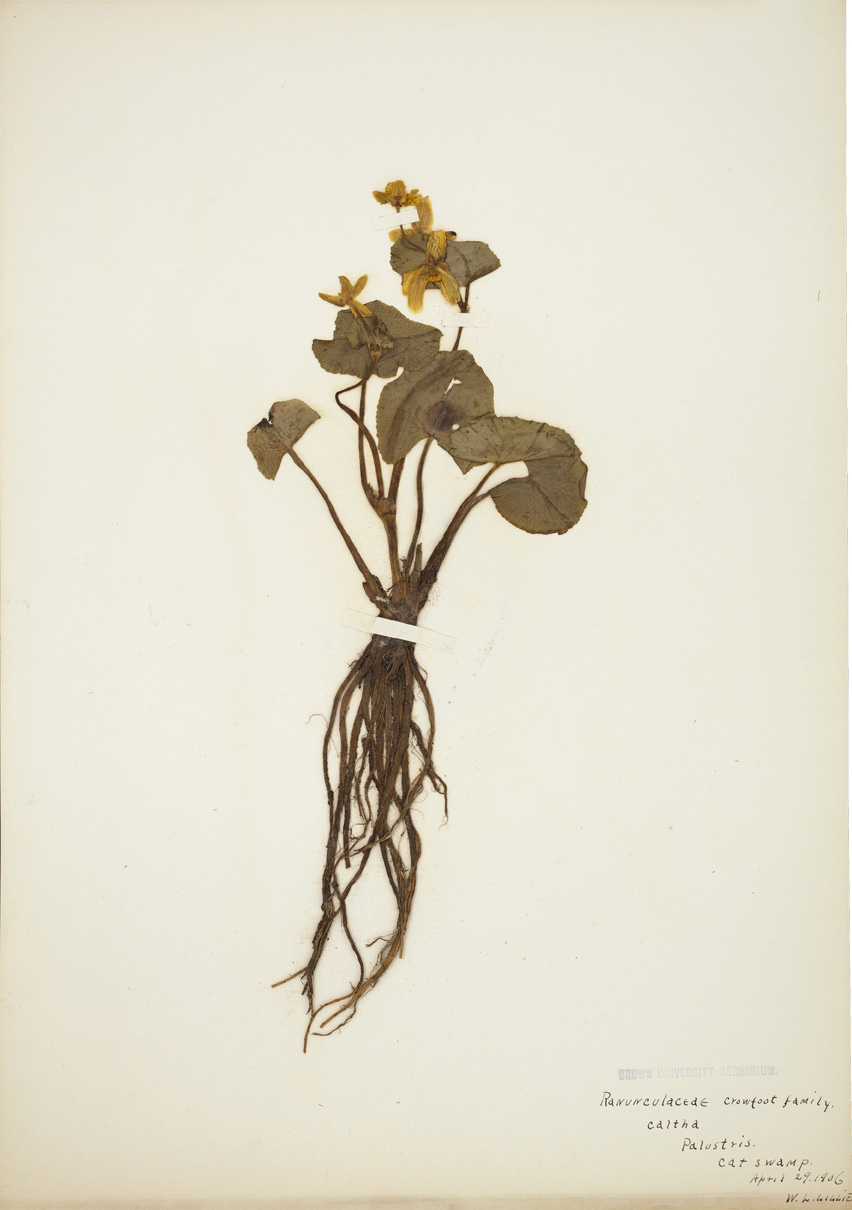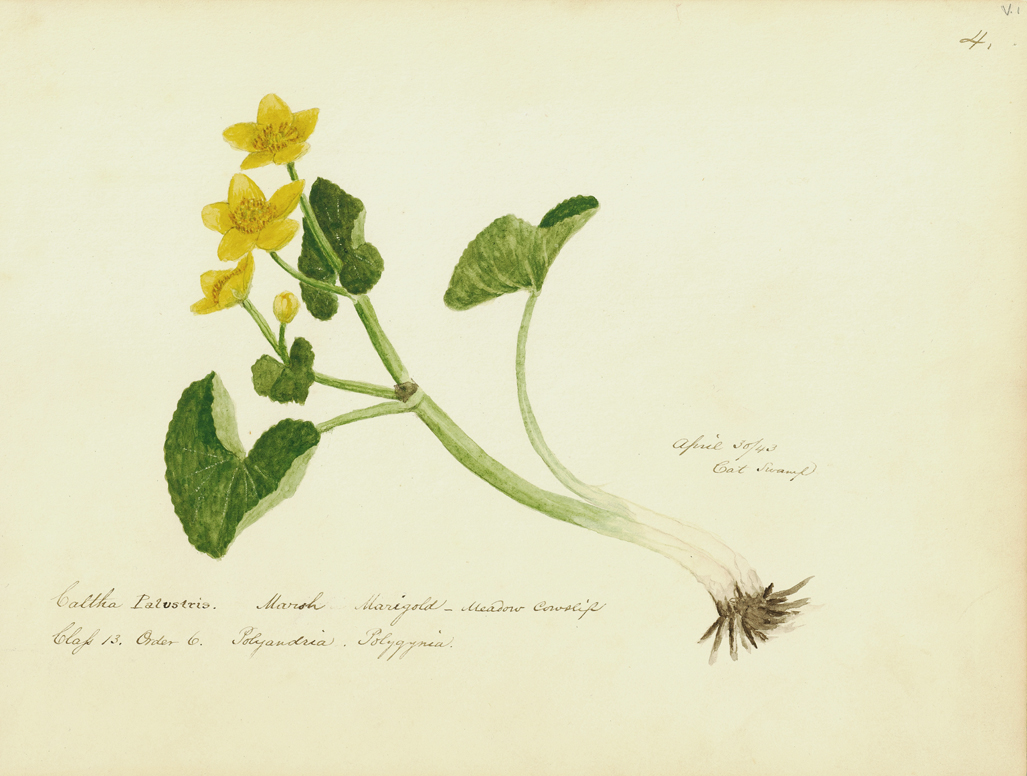The marsh-marigolds kindle their glowing foot-lights. . . . How glorious are its yellow stars in ’swamps and woodlands gray!
— William Whitman Bailey, New England Wildflowers and Their Seasons (1897)
For its size, Rhode Island has a relatively diverse flora. There are around 1,300 taxa native to the state and a further 400 or so that have been naturalized since European colonial times.
To some extent, Rhode Island is a meeting point for northern and southern plants. We can find boreal species which are more common further north in New England, along with Alleghanian species that extend down the Appalachian Mountains. There are also coastal plain and maritime species that add to our state’s diversity.
This mixture, packed into such a small area, is what Edward Peckham and his botanist friends found so exciting. From about 1830 to 1835, Peckham commenced his botanical studies with a group of Rhode Island botanists including Stephen Thayer Olney, George Hunt and George Thurber. With them and by himself, he explored locations all over Rhode Island seeking to capture a wide variety of flora.
Caltha palustris L.
(marsh marigold), Ranunculaceae (buttercup family)
The marsh marigold grows in open or partially shaded wet areas, such as the edges of marshes, in wet woods and in swamps. Known from across the northern parts of North America and the Northern Hemisphere. In New England, this is one of the earliest species to flower in the spring. Despite the common name, this species is not closely related to marigolds, which are in the aster family (Asteraceae).
The genus name, Caltha, is derived from the Greek kalathos, meaning “goblet,” referring to the shape of the flower. The species name, palustris, refers to the species’ preferred habitat of marshy places.


